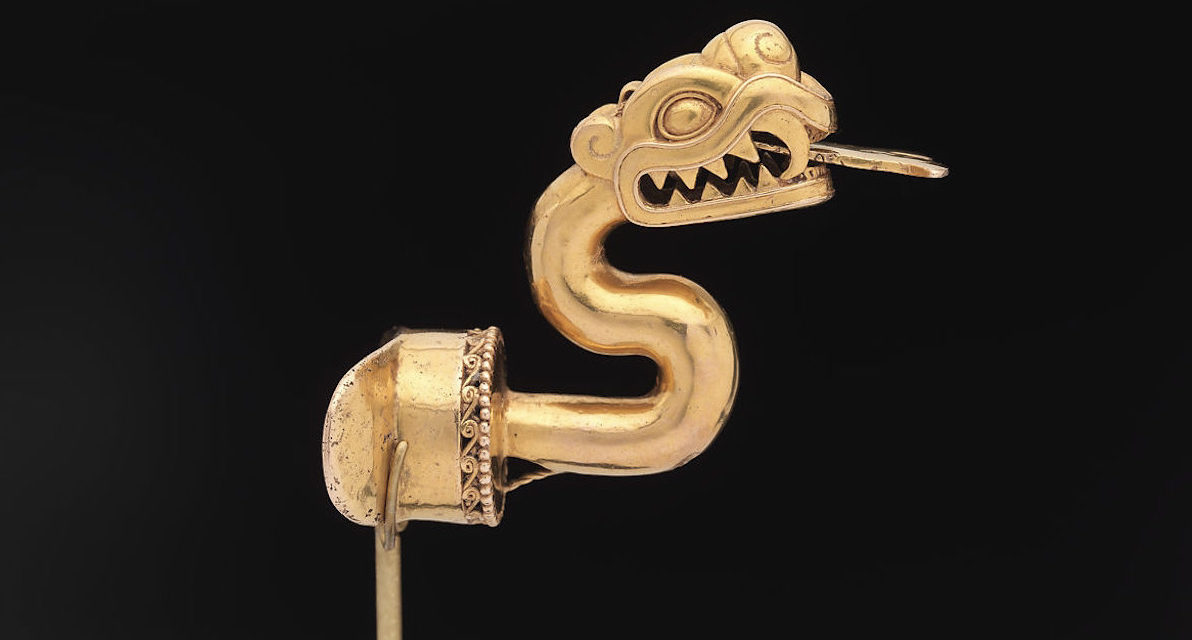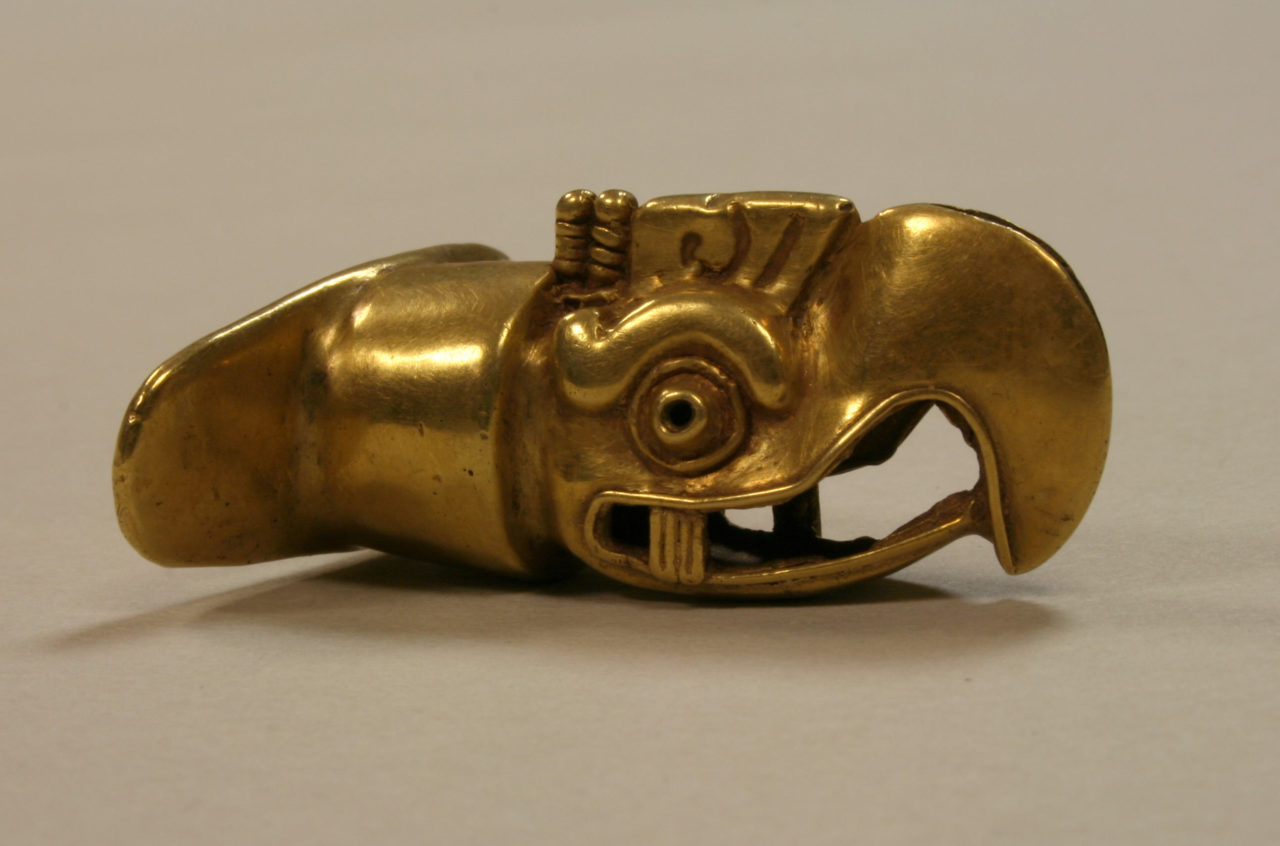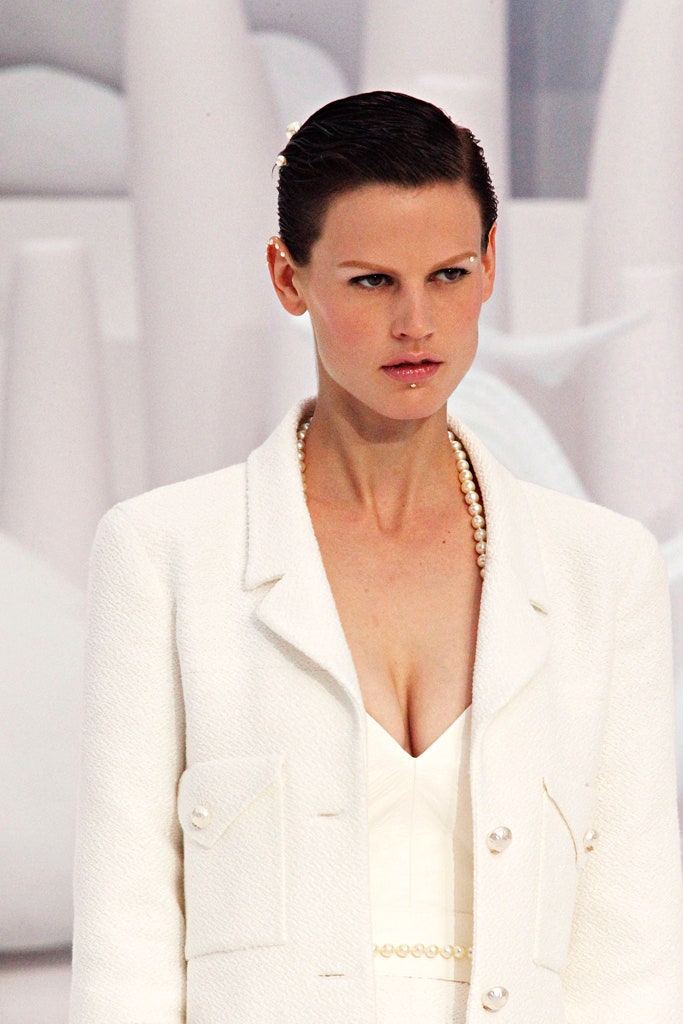A labret is a type of lip-piercing worn by various cultures to indicate wealth, prosperity and beauty.
The Details
In an article on the Northwest coast of North America for the Berg Encyclopedia of World Dress and Fashion (2010), author Kathryn B. Bunn-Marcuse describes the long history of labrets in the ancient Americas:
“The use of labrets is an ancient practice with evidence dating back to 1000 b.c.e. The recorded practice of lip-piercing documents that the custom was initiated when a girl reached marriageable age, at which time her lower lip would be pierced with a small pin. The opening would be expanded over time, with labrets of ever-increasing size inserted at status-changing moments in a woman’s life.”
Labrets among other groups were worn by all genders and across North, Central and South America.
In History of World Costume and Fashion (2011), Daniel Delis Hill describes the use of labrets in Mesoamerica and in the Arctic:
“The labret was a lip plug similar to the Aztec bezote. Men inserted a pair of labrets to symbolize walrus tusks while women usually preferred a single, wide piece of ivory with strands of beads attached. Labrets were originally ornamented with shell, bone, ivory, and stone beads, but after contact with European traders, vividly colored glass beads became highly prized.” (304)
The Met has an Aztec gold labret (Fig. 1) that resembles an eagle head and another that represents a gold serpent (Fig. 2).
The Metropolitan Museum of Art has a gold labret (Fig. 3) from the Tairona culture (Colombia) which resembles a face with many intricate details. Alongside the Tairona labret, the Met also has a simpler Tairona gold labret (Fig. 4) with braided detailing along the top.
In Fashion, Costume, and Culture: Clothing, Headwear, Body Decorations, and Footwear through the Ages (2004), Sara Pendergast and Tom Pendergast note that labrets have been worn for thousands of years by the women of several different African social groups:
“Lip plugs are considered essential to the beauty of some African women and are viewed as having protective value to others. To prepare for marriage, young women in Ethiopia insert a flat, circular plug or disk into a slit in their lower lip.”
These are only a few specific historical examples; labrets have been and are worn by people and cultures all across the world.
Fig. 1 - Artist unknown (Aztec). Labret, Eagle Head, 14th–early 16th century. Gold; 1.6 × 3.2 × 3.8 cm (5/8 × 1 1/4 × 1 1/2 in). New York: The Metropolitan Museum of Art, 1978.412.218. The Michael C. Rockefeller Memorial Collection, Purchase, Nelson A. Rockefeller Gift, 1967. Source: The Met
Fig. 2 - Artist unknown (Aztec). Serpent Labret with Articulated Tongue, A.D. 1300–1521. Gold; 6.67 × 4.45 × 6.67 cm (2 5/8 × 1 3/4 × 2 5/8 in). New York: The Metropolitan Museum of Art, 2016.64. Purchase, 2015 Benefit Fund and Lila Acheson Wallace Gift, 2016. Source: The Met
Fig. 3 - Artist unknown (Tairona). Labret, 10th–16th century. Gold; 4.8 × 2.4 cm (1 7/8 x 15/16 in). New York: The Metropolitan Museum of Art, 1974.271.62. Gift and Bequest of Alice K. Bache, 1974, 1977. Source: The Met
Fig. 4 - Artist unknown (Tairona). Labret, 10th–16th century. Gold; 3.2 × 5.1 × 3.8 cm (1 1/4 × 2 × 1 1/2 in). New York: The Metropolitan Museum of Art, 2005.409.2. Gift of Jan Mitchell, 2005. Source: The Met
Its Afterlife
Designers Karl Lagerfeld and Léa Peckre have incorporated labret accessories into their collections. In spring 2012, Chanel’s Ready to Wear collection, model Saskia de Brauw (Fig. 5) was wearing a delicate pearl labret along her bottom lip. Whereas, Léa Peckre used more elaborate labret jewelry (Fig. 6) on the models in her Spring 2016 runway.
Fig. 5 - Karl Lagerfeld (German, 1933-). Labret, Spring 2012. Model: Saskia de Brauw. Photograph by Yannis Vlamos / GoRunway.com. Source: Vogue
Fig. 6 - Léa Peckre (French, 1984-). Labret, Spring 2016. Source: Livingly
References:
- Bunn-Marcuse, Kathryn B. “The Northwest Coast.” In Berg Encyclopedia of World Dress and Fashion: The United States and Canada, edited by Phyllis G. Tortora, 385–395. Oxford: Bloomsbury Academic, 2010. Accessed March 03, 2021. http://dx.doi.org/10.2752/BEWDF/EDch3052.
- Hill, Daniel Delis. History of World Costume and Fashion. Upper Saddle River, NJ: Pearson Prentice Hall, 2011. http://www.worldcat.org/oclc/768100950.
- “Lip Plugs.” In Early Cultures Across the Globe, edited by Sara Pendergast and Tom Pendergast, 438-439. Vol. 2 of Fashion, Costume, and Culture: Clothing, Headwear, Body Decorations, and Footwear through the Ages. Detroit, MI: UXL, 2004. Gale eBooks (accessed March 2, 2021). https://link.gale.com/apps/doc/CX3425500266/GVRL?u=fitsuny&sid=GVRL&xid=c6ab8a52.
















